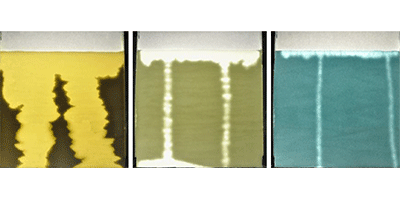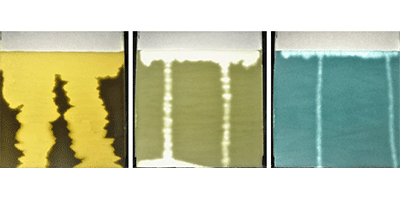Optimizing Crop Irrigation
Improving crop yields in marginal, sandy soils is critical to feeding the world’s growing population. But when water is added to dry soils—either from rainfall or irrigation sources—it tends to flow in channels, as opposed to spreading out evenly, an effect that prevents water from reaching all plant roots. Douglas Durian at the University of Pennsylvania, Philadelphia, and his colleagues have now modeled sandy soils in the laboratory, identifying several strategies that can suppress the formation of water channels and ensure that water is more uniformly distributed to crops.
Durian, collaborating with Rémi Dreyfus and his group at the COMPASS laboratory in Bristol, Pennsylvania, modeled sandy soils using boxes of glass beads, above which they suspended a series of evenly spaced capillaries to provide “rain.” By experimenting on soil in the laboratory—rather than in the field—Durian and his colleagues were able to systematically test how different factors (such as the size of particles that make up the soil and the speed and volume of rainfall) affect the width of water channels and the separation between them. The setup allowed them to confirm that several methods are effective at preventing large channels from forming. One is pre-wetting the soil, which favors the formation of small, irregular water channels over large, defined channels. (The effect occurs because liquids tend to move through wet zones, essentially inflating an already wet layer.) The other method is to add superabsorbent hydrogel particles, which can swell to 5 times their normal size when bathed in water and can clog large channels.
This research is published in Physical Review Applied.
–Katherine Kornei





